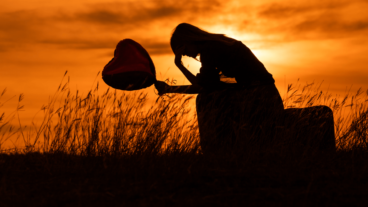The 12 Jungian Archetypes

Carl Gustav Jung is perhaps the most famous dissident of classic psychoanalysis. He strayed away from Freudian ideas and explored ancestral roots and the collective unconscious and had many revolutionary ideas. One of them was the 12 Jungian archetypes of personality.
To define his 12 archetypes of personality, Jung studied the symbols and myths of many different cultures. These archetypes represent behavior patterns that make up different ways of being. They’re also cultural symbols and images that exist in the collective unconscious.
“One does not become enlightened by imagining figures of light, but by making the darkness conscious. The later procedure, however, is disagreeable and therefore not popular.”
-Carl Jung-
He defined the 12 Jungian archetypes as an innate tendency to generate images with intense emotional meaning that express the relational primacy of human life. They’re imprints that are buried in our unconscious. These terms define the particular traits that we all have.
The 12 Jungian archetypes
1. The Sage
The sage is a free thinker. Their intellect and knowledge are their reason for living, their essence. They seek to understand the world and their being by using their intelligence and analytical skills. They always have a fact, a quote, or a logical argument on the tip of their tongue.

2. The Innocent
The innocent seems to have read and absorbed every self-help book in the world. They’re optimistic and always searching for happiness. The innocent sees the good in everything. They want to feel well-adjusted to the world around them. The innocent also wants to please others and feel like they belong.
3. The Explorer
The explorer is a bold traveler. They set out without a clear path and are always open to novelty and adventure. The explorer has a deep love of discovering new places and new things about themselves. The downside of the explorer archetype is that they’re always searching for perfection and they’re never satisfied.
4. The Ruler
The ruler is a classic leader. They believe they should be the one to bring order to any situation. The ruler is stable, strives for excellence, and wants everyone to follow their lead. They tend to have plenty of reasons why everyone should listen to them. This is one of the 12 Jungian archetypes related to power. The ruler, in their desire to impose their will on others, can easily become a tyrant.
5. The Creator
The creator has a profound desire for freedom because they love novelty. They love to transform things in order to make something completely new. The creator is clever, non-conformist, and self-sufficient. They’re imaginative and good-humored. However, they can also be inconsistent and spend more time thinking than actually doing.

6. The Caregiver
The caregiver feels stronger than other people. Consequently, they offer maternal protection to those around them. They want to protect people from harm and try to prevent any danger or risk from threatening other people’s happiness. In extreme cases, the caregiver turns into a martyr who constantly reminds everyone of their sacrifices.
7. The Magician
The magician is like a great revolutionary. They regenerate and renew not just for themselves, but for others as well. They’re constantly growing and transforming. The negative side of the magician archetype is that their mood can be contagious. They sometimes turn positive events into negative ones.
8. The Hero
The axis of a hero’s life is power. The hero has an uncommon vitality and resistance that they use to fight for power or honor. They’ll do anything to avoid losing. In fact, they don’t lose because they never give up. The hero can be overly ambitious and controlling.
9. The Rebel
The rebel is a transgressor. They provoke people and don’t care at all about other people’s opinions. As a result, they like going against the grain and thinking for themselves. They don’t like to be pressured or influenced. The negative side to the rebel archetype is that they can become self-destructive.
10. The Lover
The lover is all heart and sensitivity. They love love and love to lavish it on other people. Their greatest happiness is feeling loved. They enjoy everything that’s pleasing to the senses. They value beauty (in every sense of the word) above all.

11. The Jester
The jester likes to laugh, even at themselves. They don’t wear any masks and tend to break down other people’s walls. They never take themselves seriously because their goal is to enjoy life. The negative side of the jester is that they can be lewd, lazy, and greedy.
12. The Orphan
The orphan archetype walks around with open wounds. They feel betrayed and disappointed. They want other people to take charge of their life. When no one does, they feel disappointed. They tend to spend time with people who feel just like them. The orphan often plays the victim. They pretend to be innocent. The orphan has a cynical side and manipulative talent.
The 12 Jungian archetypes we describe here aren’t the only version of Jung’s ideas. Other versions include different archetypes. However, they’re essentially the same, just with slightly different names. You can use these archetypes in many fields, including psychotherapy, marketing, and art.
Carl Gustav Jung is perhaps the most famous dissident of classic psychoanalysis. He strayed away from Freudian ideas and explored ancestral roots and the collective unconscious and had many revolutionary ideas. One of them was the 12 Jungian archetypes of personality.
To define his 12 archetypes of personality, Jung studied the symbols and myths of many different cultures. These archetypes represent behavior patterns that make up different ways of being. They’re also cultural symbols and images that exist in the collective unconscious.
“One does not become enlightened by imagining figures of light, but by making the darkness conscious. The later procedure, however, is disagreeable and therefore not popular.”
-Carl Jung-
He defined the 12 Jungian archetypes as an innate tendency to generate images with intense emotional meaning that express the relational primacy of human life. They’re imprints that are buried in our unconscious. These terms define the particular traits that we all have.
The 12 Jungian archetypes
1. The Sage
The sage is a free thinker. Their intellect and knowledge are their reason for living, their essence. They seek to understand the world and their being by using their intelligence and analytical skills. They always have a fact, a quote, or a logical argument on the tip of their tongue.

2. The Innocent
The innocent seems to have read and absorbed every self-help book in the world. They’re optimistic and always searching for happiness. The innocent sees the good in everything. They want to feel well-adjusted to the world around them. The innocent also wants to please others and feel like they belong.
3. The Explorer
The explorer is a bold traveler. They set out without a clear path and are always open to novelty and adventure. The explorer has a deep love of discovering new places and new things about themselves. The downside of the explorer archetype is that they’re always searching for perfection and they’re never satisfied.
4. The Ruler
The ruler is a classic leader. They believe they should be the one to bring order to any situation. The ruler is stable, strives for excellence, and wants everyone to follow their lead. They tend to have plenty of reasons why everyone should listen to them. This is one of the 12 Jungian archetypes related to power. The ruler, in their desire to impose their will on others, can easily become a tyrant.
5. The Creator
The creator has a profound desire for freedom because they love novelty. They love to transform things in order to make something completely new. The creator is clever, non-conformist, and self-sufficient. They’re imaginative and good-humored. However, they can also be inconsistent and spend more time thinking than actually doing.

6. The Caregiver
The caregiver feels stronger than other people. Consequently, they offer maternal protection to those around them. They want to protect people from harm and try to prevent any danger or risk from threatening other people’s happiness. In extreme cases, the caregiver turns into a martyr who constantly reminds everyone of their sacrifices.
7. The Magician
The magician is like a great revolutionary. They regenerate and renew not just for themselves, but for others as well. They’re constantly growing and transforming. The negative side of the magician archetype is that their mood can be contagious. They sometimes turn positive events into negative ones.
8. The Hero
The axis of a hero’s life is power. The hero has an uncommon vitality and resistance that they use to fight for power or honor. They’ll do anything to avoid losing. In fact, they don’t lose because they never give up. The hero can be overly ambitious and controlling.
9. The Rebel
The rebel is a transgressor. They provoke people and don’t care at all about other people’s opinions. As a result, they like going against the grain and thinking for themselves. They don’t like to be pressured or influenced. The negative side to the rebel archetype is that they can become self-destructive.
10. The Lover
The lover is all heart and sensitivity. They love love and love to lavish it on other people. Their greatest happiness is feeling loved. They enjoy everything that’s pleasing to the senses. They value beauty (in every sense of the word) above all.

11. The Jester
The jester likes to laugh, even at themselves. They don’t wear any masks and tend to break down other people’s walls. They never take themselves seriously because their goal is to enjoy life. The negative side of the jester is that they can be lewd, lazy, and greedy.
12. The Orphan
The orphan archetype walks around with open wounds. They feel betrayed and disappointed. They want other people to take charge of their life. When no one does, they feel disappointed. They tend to spend time with people who feel just like them. The orphan often plays the victim. They pretend to be innocent. The orphan has a cynical side and manipulative talent.
The 12 Jungian archetypes we describe here aren’t the only version of Jung’s ideas. Other versions include different archetypes. However, they’re essentially the same, just with slightly different names. You can use these archetypes in many fields, including psychotherapy, marketing, and art.
This text is provided for informational purposes only and does not replace consultation with a professional. If in doubt, consult your specialist.







